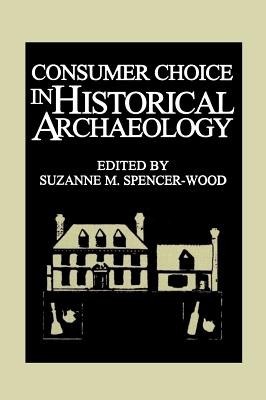
- We will send in 10–14 business days.
- Publisher: Springer
- ISBN-10: 0306423189
- ISBN-13: 9780306423185
- Format: 18.7 x 26.3 x 3.4 cm, hardcover
- Language: English
- SAVE -10% with code: EXTRA
Consumer Choice in Historical Archaeology (e-book) (used book) | bookbook.eu
Reviews
Description
Historical archaeology has made great strides during the last two decades. Early archaeological reports were dominated by descriptions of features and artifacts, while research on artifacts was concentrated on studies of topology, technology, and chronology. Site reports from the 1960s and 1970s commonly expressed faith in the potential artifacts had for aiding in the identifying socioeconomic status differences and for understanding the relationships be- tween the social classes in terms of their material culture. An emphasis was placed on the presence or absence of porcelain or teaware as an indication of social status. These were typical features in site reports written just a few years ago. During this same period, advances were being made in the study of food bone as archaeologists moved away from bone counts to minimal animal counts and then on to the costs of various cuts of meat. Within the last five years our ability to address questions of the rela- tionship between material culture and socioeconomic status has greatly ex- panded. The essays in this volume present efforts toward measuring expendi- ture and consumption patterns represented by commonly recovered artifacts and food bone. These patterns of consumption are examined in conjunction with evidence from documentary sources that provide information on occupa- tions, wealth levels, and ethnic affiliations of those that did the consuming. One of the refreshing aspects of these papers is that the authors are not afraid of documents, and their use of them is not limited to a role of confirmation.
EXTRA 10 % discount with code: EXTRA
The promotion ends in 10d.11:13:05
The discount code is valid when purchasing from 10 €. Discounts do not stack.
- Publisher: Springer
- ISBN-10: 0306423189
- ISBN-13: 9780306423185
- Format: 18.7 x 26.3 x 3.4 cm, hardcover
- Language: English English
Historical archaeology has made great strides during the last two decades. Early archaeological reports were dominated by descriptions of features and artifacts, while research on artifacts was concentrated on studies of topology, technology, and chronology. Site reports from the 1960s and 1970s commonly expressed faith in the potential artifacts had for aiding in the identifying socioeconomic status differences and for understanding the relationships be- tween the social classes in terms of their material culture. An emphasis was placed on the presence or absence of porcelain or teaware as an indication of social status. These were typical features in site reports written just a few years ago. During this same period, advances were being made in the study of food bone as archaeologists moved away from bone counts to minimal animal counts and then on to the costs of various cuts of meat. Within the last five years our ability to address questions of the rela- tionship between material culture and socioeconomic status has greatly ex- panded. The essays in this volume present efforts toward measuring expendi- ture and consumption patterns represented by commonly recovered artifacts and food bone. These patterns of consumption are examined in conjunction with evidence from documentary sources that provide information on occupa- tions, wealth levels, and ethnic affiliations of those that did the consuming. One of the refreshing aspects of these papers is that the authors are not afraid of documents, and their use of them is not limited to a role of confirmation.


Reviews